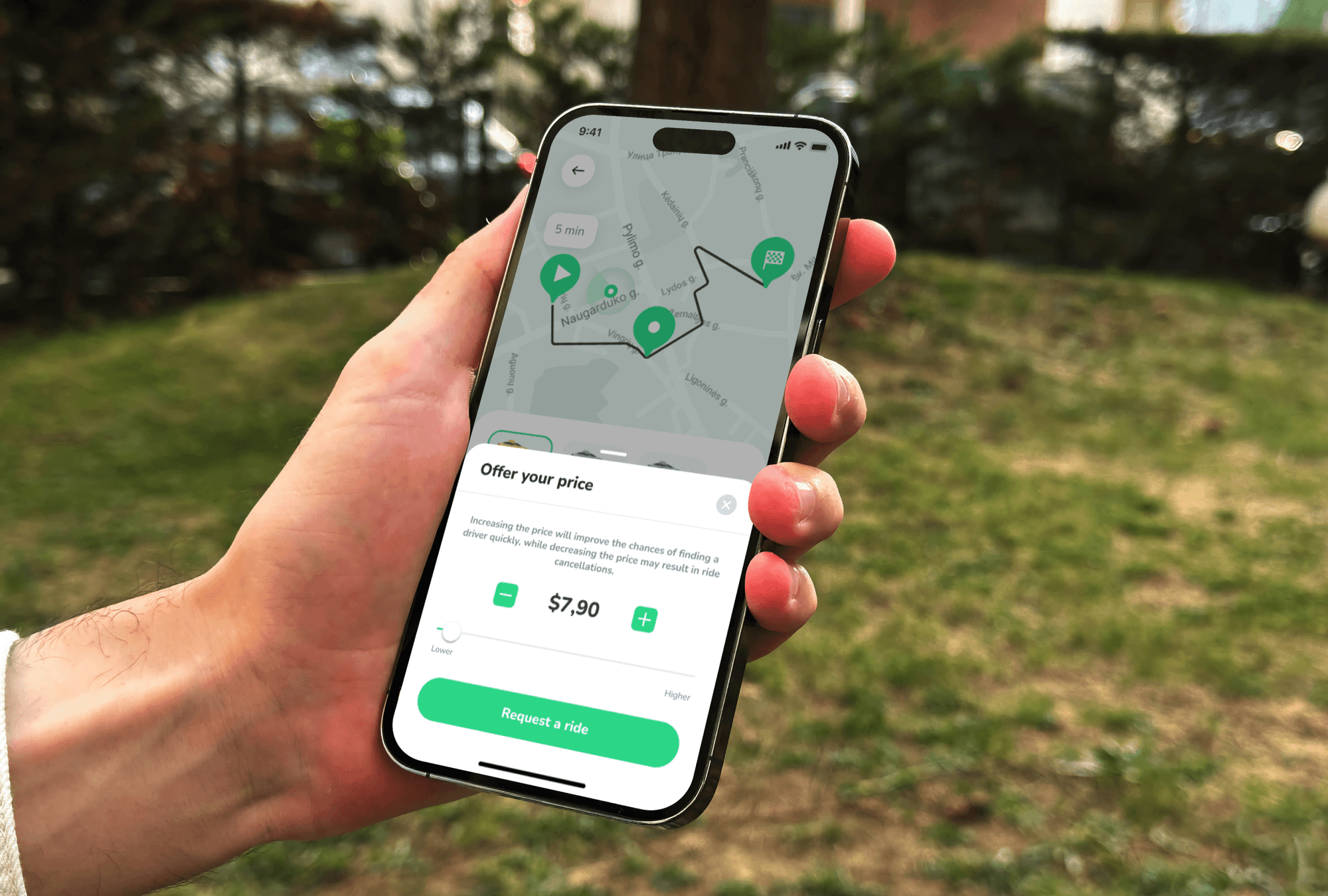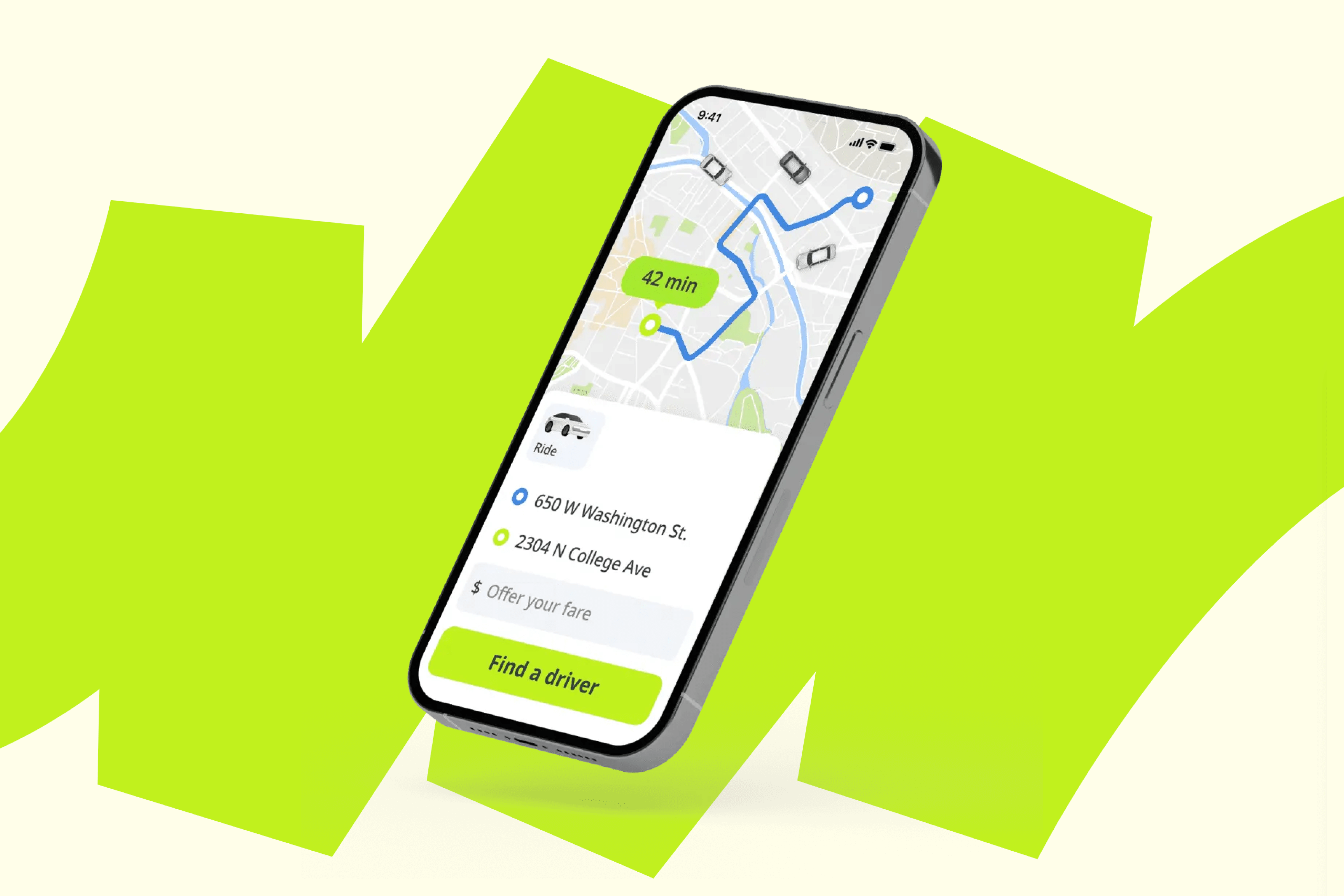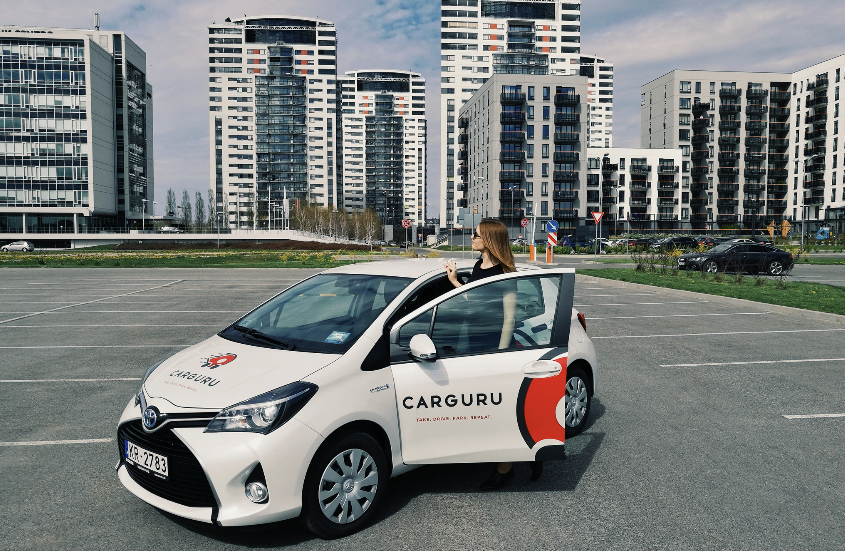Insights and news from the ATOM Mobility team
We started our blog to share free valuable information about the mobility industry: inspirational stories, financial analysis, marketing ideas, practical tips, new feature announcements and more.
We started our blog to share free valuable information about the mobility industry: inspirational stories, financial analysis, marketing ideas, practical tips, new feature announcements and more.

🚗 The car rental industry is finally catching up with modern mobility. From Norway to Mexico, users are skipping the desk and unlocking their rental cars with just a tap on their phone. Paper contracts, front desks, and "similar model" surprises are being replaced by fast, app-based experiences. Operators like Hyre, Sixt, and Avis are proving that going digital boosts revenue and improves customer satisfaction.
The car rental industry is finally going digital. Not with just a website and an app, but with a real transformation of how rentals work – from booking to unlocking the vehicle. Customers no longer want paper contracts, counters, or “similar model” surprises. They want convenience, predictability, and self-service.
That’s exactly what happened at Norway’s largest airports, where traditional rental giant Europcar lost its presence to Hyre – a local operator offering a mobile-first, fully digital blend of car rental and sharing. But it’s not just new players like Hyre pushing this shift. Established giants like Sixt and Avis are rapidly digitalising their rental flow as well – rolling out features like app-based bookings, mobile ID verification, and keyless access across key markets.
At ATOM Mobility, we’ve helped operators move toward this digital future for over seven years. The goal is simple: modernise outdated processes, improve the user experience, and create more profitable operations. And right now, the timing for this shift couldn’t be better.

From counters to apps: Why the rental experience is changing
Customer expectations have changed. Today’s users – especially younger ones and business travellers – are used to seamless, mobile-first journeys. They don’t want to queue at a desk, hand over their ID, wait for paperwork, or discover they’re getting a different car than they booked. And in many cases, they simply won’t accept it.
Hyre’s model responds to this new demand:
And the results are impressive:
This shift is not just a trend in Norway. It’s a glimpse of where the car rental market is heading across Europe and beyond.
What users gain from a digital rental experience
The benefits for customers are obvious – and powerful:
This is what the modern traveller wants: clarity, control, and speed.
Why operators are embracing digitalisation
While the user benefits are clear, the real business case lies in how much better digitalisation makes operations:
Real examples: Hyre, Sixt, Avis, and Beyond
These companies understand that digitalisation isn’t about offering an app – it’s about rebuilding the rental experience around the user. And it's paying off.
What this means for operators (and how ATOM Mobility can help)
If you’re running a rental operation and still relying on paperwork, front desks, or disconnected tools, now’s the time to evolve.
Here’s how you can modernise your operations with help from ATOM Mobility:
ATOM Mobility provides all the building blocks to power this shift. Whether you’re a traditional rental company l
ooking to go mobile-first, or a new operator exploring flexible mobility, we’ve built the tech to get you there.
The rental counter is going away
Car rental is becoming more like e-commerce: fast, digital, and customer-led. The counter, the queue, the paperwork – these are all parts of an older model that no longer meets expectations. The future lies in seamless, app-based access that lets users pick the car they want, when they want it.
The Hyre example shows what’s possible with the right model. Sixt and Avis show how even large incumbents are adapting. If you’re an operator – big or small – the time to start this shift is now.
And if you’re looking for a trusted partner to support you on that journey, ATOM Mobility digital rental software is ready. We help rental and car sharing businesses launch, scale, and thrive – with the tech that powers modern mobility.
%20(1).png)
🚗 ATOM Mobility launches a new Web-booker for Digital Rental 🗓️ - letting customers book vehicles directly from the website. Frictionless, branded, and enabled by default for all rental merchants ✅
ATOM Mobility is introducing a new way for users to start their rental journey: the Web-booker widget 🗓️
With this tool, users can book a car (or other vehicle) directly from merchant's website without first downloading the rider app. It creates a smoother entry point for new users while keeping the app central for payments, ID verification, and ride management.
✅ A dedicated booking link for every merchant
✅ Customers choose area, vehicle, and rental period → confirm booking in seconds
✅ Widget syncs bookings into system automatically
✅ After booking, a QR code + App Store / Google Play links are shown so users can continue in the app
✅ In the mobile app, users finalize payment and ID/driver’s license verification before starting the trip
🎨 The widget matches app’s primary color for a seamless, branded look.
📊 Every booking now shows its Source – App, Web-booker, Dashboard, or API.
👉 Demo it here: app.atommobility.com/rental-widget
Many successful digital rental and mobility platforms combine web and app booking flows to maximize conversion.
Take Turo for example:
New ATOM Web-booker works the same way - creating an easy on-ramp from website, while letting the app handle verification and payments.
This feature also aligns with the broader industry evolution we covered in Traditional Car Rental vs Peer-to-Peer Car Sharing vs On-demand Car Sharing artticle. As booking models diversify, offering multiple access points - web + app + api – is becoming a standard expectation from customers.
The global car-sharing market (including peer-to-peer sharing) is projected to reach USD 28.7 billion by 2030, growing from USD 11.5 billion in 2025 at 20% annual growth rate, with digital-first players outpacing traditional operators. One of the biggest success drivers? Reducing onboarding friction and providing automated processes.
The message is clear: giving customers multiple, seamless entry points directly impacts conversion and utilization.
The Web-booker is enabled by default for all ATOM Mobility digital rental merchants for free. Just place the booking button on your website, and your customers are ready to go.
📩 Want to see how the Web-booker can boost your conversion and simplify rentals? Get in touch with our team and let’s set it up for you.

💸 ATOM Mobility launches “Offer your price” - a rider-controlled pricing feature. Riders can suggest higher or lower fares within pre-set limits. Boosts demand & helps stand out in competitive ride-hail markets 🚖🌍
The ride-hailing market is always changing. From Latin America to Eastern Europe, platforms like inDrive have popularized a new norm: letting riders suggest what they want to pay. Now, in response to this growing global trend, ATOM Mobility is proud to introduce: Offer your price – a fully configurable pricing feature built right into your rider app.
Available on all ride-hail projects, this feature lets riders propose a price – higher or lower than the default fare – within operator-set limits. Drivers can then accept or decline based on the offer.
Here’s how it reshapes the experience:
Your admin dashboard defines the limits – say, up to +500% from regular price and down to -30% – and the app calculates step sizes automatically:
Slider position adapts dynamically, depending on your defined range. And yes – the button color and style can be customized to match your brand 🎨.
You’ll find complete control and clarity:
In the driver app:
Real-world companies are already proving that rider-defined pricing works:
🚘 inDrive (LATAM, Africa, Asia)
Now one of the top global ride-hailing players outside the U.S. (over 200M downloads, active in 700+ cities across 45+ countries), inDrive built its brand around rider-negotiated pricing. It helps them stand out in price-sensitive markets and win over both drivers and passengers with more transparent pricing dynamics.
🚖 Comin (France)
A local success story, Comin has embraced flexible rider pricing to gain traction in several French cities (onboarded 6,000+ drivers). The feature gives them an edge against larger platforms, offering more freedom for users and better utilization for drivers.
These examples show that letting riders bid their price isn’t just a gimmick – it’s a growth strategy.

From our previosu blog “How to Find Your Niche in the Ride-Hail Market”, we saw how localisation and user control drive loyalty and conversion.
This new pricing flexibility supports:
This is just one of the 300+ features available in ATOM’s white-label ride-hailing platform.
Let’s talk about how to launch or upgrade your app with “Offer your price”, advanced pricing logic, and more tools to dominate your niche.
👉 Contact our team and explore how to become the market leader: www.atommobility.com

🚗💡 Is car sharing still a profitable business in 2025? Short answer – yes, if done right. From rising fleet costs to smarter user behavior and green transport trends, the shared mobility game is changing fast. Learn what makes a car sharing business work today – and why some succeed while others shut down. 👉 Real stories, data-backed tips, and practical advice for operators and mobility founders.
In 2024, the global car-sharing market was valued at approximately €8.9 billion, with Europe accounting for over 50.2% of that total. Analysts forecast it will grow at a CAGR of 11.8% between 2025 and 2033, reaching roughly €24.4 billion by 2033. This blend of urbanization, environmental regulation and a growing preference for flexible mobility continues to create fertile ground for operators - yet not every service finds a clear path to profitability.
Success hinges on your location, business model, fleet, operations and local market dynamics. There are strong success stories, but also many high-profile failures. Here’s a closer look at what really affects profitability in today’s car-sharing market - and what you can learn from real-world cases.
Profitability in car sharing boils down to securing enough paid usage while keeping costs under control. Every unused hour or unnecessary expense erodes margins.
Key factors:
The operators who win are those who combine solid daily usage with lean operations.
29 March 2025 marked the end of Panek’s car-sharing experiment. Despite peaking at 2 700–3 000 vehicles, Panek never turned a profit in over seven years.
Faced with persistent losses, Panek’s leadership refocused on profitable core segments: daily/weekly rentals, corporate leasing and Fleet-as-a-Service.
WiBLE (50/50 joint venture between Kia Europe and Repsol) launched in 2018 and has just closed its second consecutive year with positive EBITDA.
Key enablers:
After five years of absorbing fixed-cost drag and depreciation, WiBLE now leverages Madrid’s regulatory environment (low-emission zones, parking benefits) and delivers lean, tech-driven operations.
SOCAR (backed by SoftBank, SK Inc. and Lotte Group) operates 20 000 vehicles, generates nearly €300 million in annual turnover and has 20% of South Koreans signed up.
By pairing massive scale with savvy car lifecycle management, extra-long rental duration, SOCAR converts high utilization into robust profitability.
30 August 2024: Carguru (est. 2017) acquired EV-focused OX Drive (est. 2021), adding 200+ Tesla to the fleet.
Outcome: A combined ICE, hybrid and EV fleet—backed by local expertise and strategic acquisitions - has driven strong growth and high utilization.
With clear benchmarks and smart execution - drawing on lessons from Panek, WiBLE, SOCAR and Carguru - car sharing can still be a highly profitable component of a modern mobility portfolio.
If you’re planning to start or improve your service, ATOM Mobility is ready to help. We’ve built the platform and supported dozens of teams worldwide - reach out, and we’ll share what we’ve learned.
Image credit: https://kursors.lv/2018/03/13/carguru-palielina-autoparku-un-paplasina-darbibas-zonas-mikrorajonos

✅ ATOM Mobility has launched OpenAPI v1 - giving vehicle-sharing, rental, and ride-hailing operators full control to integrate their services into MaaS platforms, websites, and partner apps. Discover how this powerful tool can help you expand reach, automate operations, and drive more bookings.
We’re thrilled to announce the launch of the ATOM Mobility OpenAPI v1 - a major step toward enabling mobility operators to seamlessly integrate their services with third-party platforms, partner systems, and custom applications.
With the OpenAPI, ATOM Mobility opens up new possibilities for businesses running vehicle-sharing, rental, and ride-hailing services to extend their digital reach, enhance customer experience, and unlock new revenue streams.
An OpenAPI (or application programming interface) is a set of standardized protocols that allows external software systems to interact with your platform. In simple terms, it acts like a bridge between your mobility service and the outside world — enabling secure data sharing and functional integration.
For mobility businesses, OpenAPIs have become a key tool for:
While many mobility providers offer GBFS (General Bikeshare Feed Specification) to share read-only data (ATOM Mobility will continue supporting GBFS) - such as vehicle locations and availability - these feeds are typically limited to visibility. Users still need to switch to a provider's app to complete the ride.
ATOM Mobility’s OpenAPI is different. It offers full read-write access to the core functions of your platform - similar to what operators can already do in the back-office dashboard. This means that third-party apps can not only display your vehicles but also handle booking, payments, and ride management entirely within their own interface.
This is a game-changer for expanding your service footprint beyond your app.
The first version of the OpenAPI supports all core modules — Vehicle sharing, Digital rental, and Ride-Hailing — with both public and private endpoints for:
Here are some examples of how mobility operators are already planning to use the ATOM OpenAPI:
Connect your fleet to fast-growing MaaS platforms, for example:
Allow users to book rentals or ride directly from your website without needing to download an app upfront. This is especially useful for tourists, first-time users or hotels. The app would only be needed to unlock the vehicle or track the driver (in case of ride-hailing).
Want to offer mobility through hotels, offices, or real estate platforms? Now they can show your vehicles and complete bookings within their apps - driving high-value B2B usage without manual overhead.
Support agents can pull up a rider’s active trip data in external helpdesk tools using ride ID endpoints - improving efficiency and resolution speed.
Build your own reporting layer by pulling real-time and historical ride, user, and revenue data into tools like Power BI, Tableau, or custom CRMs.
The OpenAPI is available to all ATOM clients on the Premium Plan, which includes:
Whether you’re exploring new channels, seeking B2B integrations, or joining a MaaS platform, the ATOM OpenAPI gives you the tools to scale faster and smarter. Want to learn more or schedule a call with our integrations team?
Contact us: https://www.atommobility.com/ask